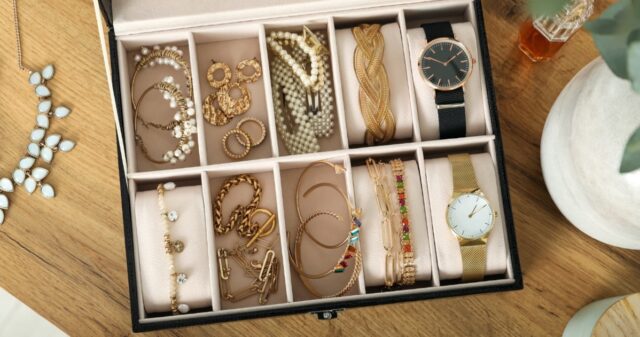Knowing how to store jewelry properly helps keep it organized, untangled, and in great condition. Whether you own everyday pieces or valuable heirlooms, protecting them ensures they last for years.
Insurance adds another layer of protection, especially for high-value jewelry items. Even with careful storage, theft, loss, or accidental damage can happen. This can cover these risks, offering peace of mind for your most treasured pieces.
How to Store Jewelry
Our guide will share tips on organizing and protecting your jewelry collection. With the right approach, you can keep your collection safe, well-organized, and ready to wear whenever you need it.
The Basics
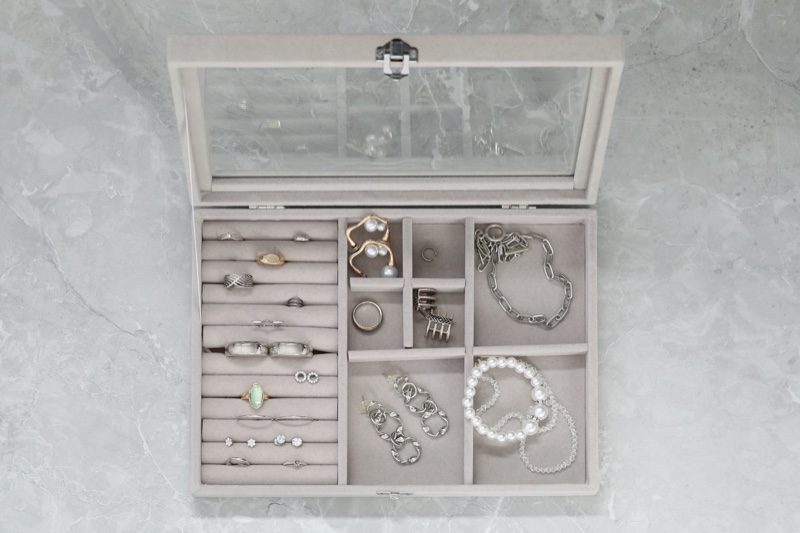
Different types of jewelry need different storage methods to stay in good condition. Necklaces tangle easily, rings can get scratched, and silver tarnishes if exposed to high humidity.
Keeping your jewelry clean and dry is the first step to protecting it. Before storing, wipe each piece with a soft cloth to remove oils, dirt, and moisture.
Choosing the right storage matters. Jewelry boxes with separate compartments help prevent tangles and scratches. Velvet-lined trays keep delicate pieces from rubbing against each other.
For long-term storage, anti-tarnish bags or pouches protect silver and other metals from oxidation. Hanging organizers work well for necklaces, while small stackable containers help sort rings and earrings.
Protecting Your Investment with Insurance

Jewelry can be lost, stolen, or damaged, even with proper storage. That’s why insurance is important for high-value or sentimental pieces, and it is surprisingly affordable. It provides financial protection if something unexpected happens.
Expensive rings, watches, or heirlooms may not be fully covered by standard homeowners or renters insurance. A separate jewelry policy ensures you get the right coverage.
Jewelry insurance works by covering theft, accidental loss, and damage. If a piece gets stolen or breaks, the policy helps cover the cost of replacement or repair. Some policies also cover lost items, like a ring slipping off while washing hands. To insure jewelry, you’ll need an appraisal to determine its value and provide proof of ownership.
Preventing Tarnish
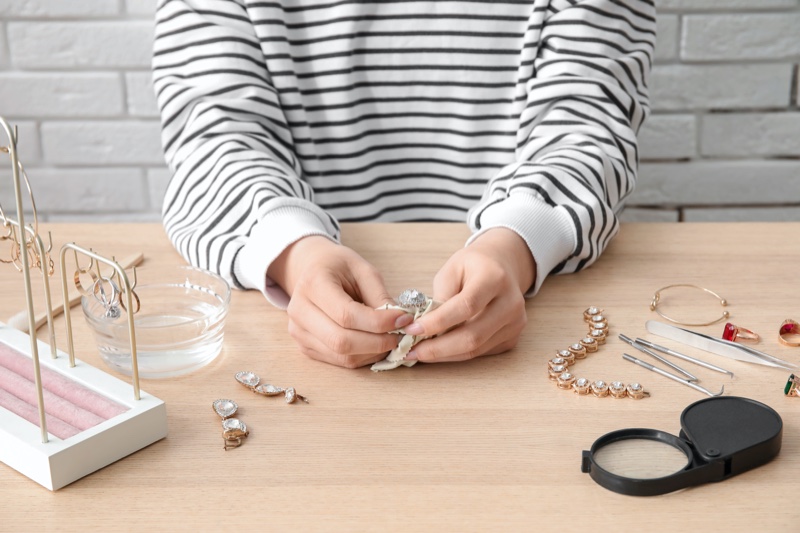
Tarnish occurs when metals react with air and moisture, causing discoloration. Silver is especially prone to this, but other metals can also dull over time. Unlike scratches or tangles, tarnish is a chemical reaction that worsens if not properly managed.
The best way to prevent tarnish is by limiting exposure to air. Use anti-tarnish strips or cloths inside storage containers. Special anti-tarnish bags create a protective barrier that slows oxidation. If storing silver long-term, wrap it in treated cloth or store it in a lined jewelry case.
Certain everyday products speed up tarnishing. Avoid placing jewelry near perfumes, lotions, or cleaning chemicals. Even skin oils can contribute, so wiping jewelry after wear helps maintain its shine.
For added protection, keep jewelry in a dry environment. If you live in a humid area, consider a dehumidifier or placing silica gel packets inside drawers.
Maximizing Space
Keeping jewelry organized makes it easier to find what you need and prevents damage. Grouping pieces by type, necklaces, rings, bracelets, and earrings, helps keep everything in order while protecting delicate items from tangling or scratching.
Necklaces should be stored in a way that prevents knots. Hanging organizers or hooks keep chains straight, while small individual pouches work well for fine or delicate pieces. Rings are best kept in padded ring trays or small stackable containers to prevent scratching.
Bracelets can be stored in compartments or displayed on bracelet holders for easy access. Earrings should be kept in organizers with separate slots to keep pairs together and prevent backs from getting lost.
For small spaces, drawer organizers, stackable trays, and wall-mounted solutions maximize storage without clutter. Clear containers help with visibility, so you can quickly find what you need.
Display & Safety Solutions
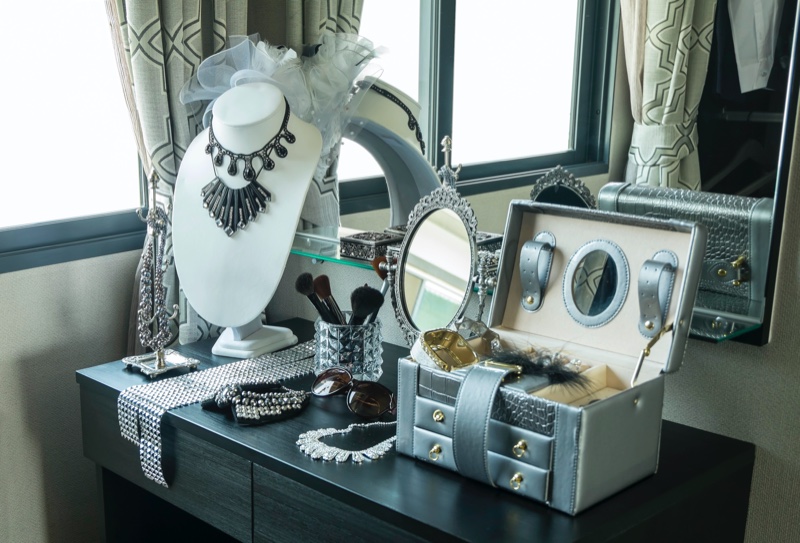
Jewelry storage should be functional and aesthetically pleasing. Displaying pieces can make accessorizing easier while adding a decorative touch to your space. However, it’s important to balance aesthetics with protection.
For everyday jewelry, open trays or tiered stands keep pieces visible and accessible. Wall-mounted organizers or shadow boxes allow you to showcase statement pieces while keeping them untangled. Glass display cases add a luxurious feel while protecting items from dust.
For delicate or formal jewelry, closed storage is best. Velvet-lined drawers, lockable jewelry boxes, or safes provide extra security. Keeping fine jewelry away from direct sunlight and dust helps prevent fading and wear.
If you want a mix of display and security, use a combination of organizers. Make sure to keep everyday items on stands and store heirlooms in a secure box.
Travel-Friendly Storage
Traveling with jewelry requires extra care to prevent tangling, scratches, or loss. Jewelry rolls or travel cases with padded compartments are great for keeping necklaces, rings, and earrings separate.
Soft pouches work well for fragile pieces, while hard-shell cases add extra protection for more expensive jewelry. For small earrings or rings, pill organizers or zip-top bags help keep them secure.
To prevent necklaces from tangling, thread each one through a straw or store them in individual pouches. For added protection, wrap pieces in a microfiber cloth before placing them in your travel bag.
If traveling with expensive jewelry, keep it in your carry-on instead of checked luggage. Using a hotel safe can add an extra layer of security.
Common Mistakes
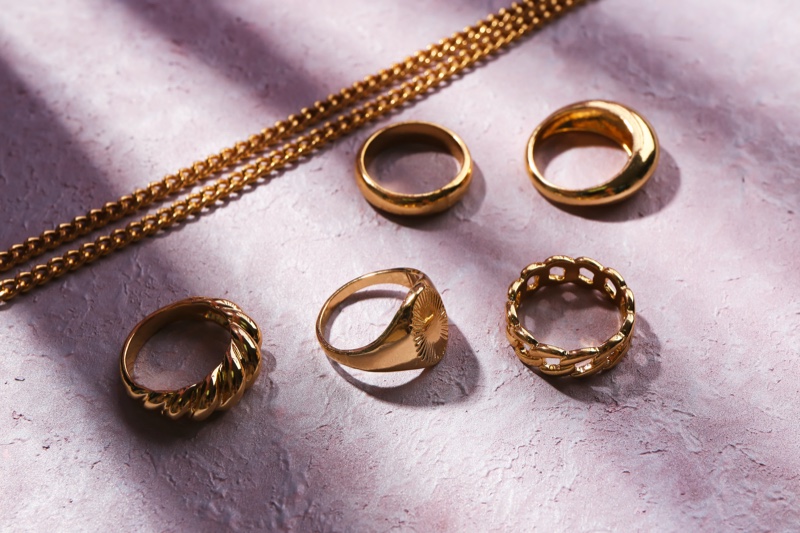
Using the wrong storage materials can cause damage. Wooden boxes without a fabric lining can scratch metals, while plastic bags trap moisture, speeding up tarnishing. Instead, use velvet-lined boxes, anti-tarnish pouches, or soft fabric bags.
Ignoring environmental factors like humidity, direct sunlight, or temperature changes can also shorten a piece’s lifespan. High humidity causes tarnish, while excessive heat can weaken glue in settings. Keep jewelry in a cool, dry place away from windows.
Before storing, check that the clasps and prongs are secure to prevent losing stones. Additionally, keep jewelry pieces separate to avoid scratches. Softer gemstones like opal, turquoise, and pearls can be easily damaged by harder stones like diamonds or sapphires.

